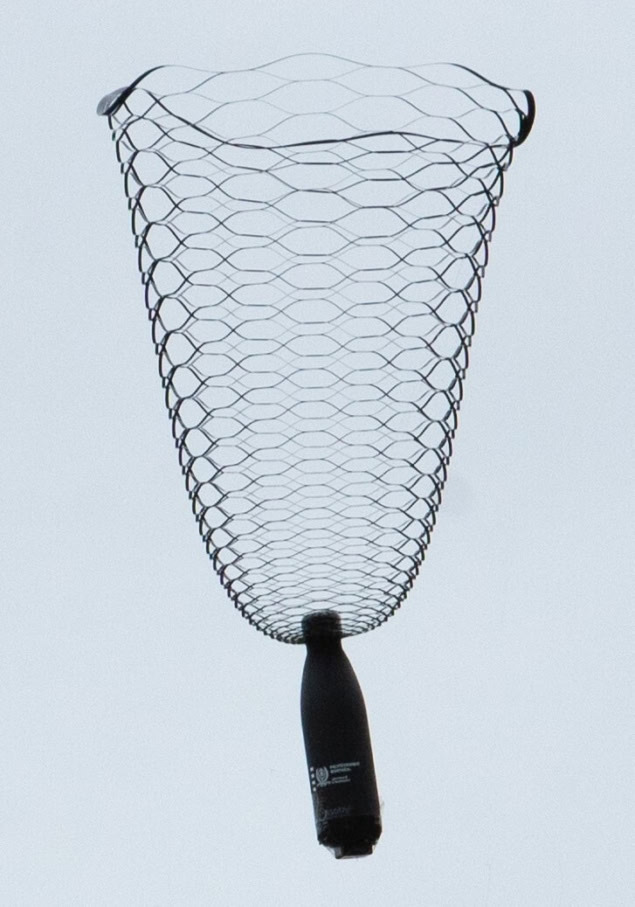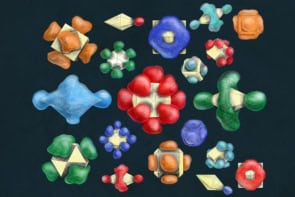
Inspired by the Japanese art of kirigami, researchers in Canada and France have designed a parachute that can safely and accurately deliver its payloads when dropped directly above its target. Tested in realistic outdoor conditions, the parachute’s deformable design stabilizes the airflow around its porous structure, removing the need to drift as it falls. With its simple and affordable design, the parachute could have especially promising uses in areas including drone delivery and humanitarian aid.
When a conventional parachute is deployed, it cannot simply fall vertically towards its target. To protect itself from turbulence, which can cause its canopy to collapse, it glides at an angle that breaks the symmetry of the airflow around it, stabilizing the parachute against small perturbations.
But this necessity comes at a cost. When dropping a payload from a drone or aircraft, this gliding angle means parachutes will often drift far from their intended targets. This can be especially frustrating and potentially dangerous for operations such as humanitarian aid delivery, where precisely targeted airdrops are often vital to success.
To address this challenge, researchers led by David Mélançon at Polytechnique Montréal looked to kirigami, whereby paper is cut and folded to create elaborate 3D designs. “Previously, kirigami has been used to morph flat sheets into 3D shapes with programmed curvatures,” Mélançon explains. “We proposed to leverage kirigami’s shape morphing capability under fluid flow to design new kinds of ballistic parachutes.”
Wind-dispersed seeds
As well as kirigami, the team drew inspiration from nature. Instead of relying on a gliding angle, many wind-dispersed seeds are equipped with structures that stabilize the airflow around them: including the feathery bristles of dandelion seeds, which create a stabilized vortex in their wake; and the wings of sycamore and maple seeds, which cause them to rapidly spin as they fall. In each case, these mechanisms provide plants with passive control over where their seeds land and germinate.
For their design, Mélançon’s team created a parachute that can deform into a shape pre-programmed by a pattern of kirigami cuts, etched into a flexible disc using a laser cutter. “Our parachutes are simple flat discs, with circumferential slits inspired by a kirigami motif called a closed loop,” Mélançon describes. “Instead of attaching the payload with strings at the outer edge of the disk, we directly mount it its centre.”
When dropped, a combination of air resistance and the weight of the free-falling payload deformed the parachute into an inverted, porous bell shape. “The slits in the kirigami pattern are stretched, forcing air through its multitude of small openings,” Mélançon continues. “This ensures that the air flows in an orderly manner without any major chaotic turbulence, resulting in a predictable trajectory.”
The researchers tested their parachute extensively using numerical simulations combined with wind tunnel experiments and outdoor tests, where they used the parachute to drop a water bottle from a hovering drone. In this case, the parachute delivered its payload safely to the ground from a height of 60 m directly above its target.
Easy to make
Mélançon’s team tested their design with a variety of parachute sizes and kirigami patterns, demonstrating that designs with lower load-to-area ratios and more deformable patterns can reach comparable terminal velocity to conventional parachutes – with far greater certainty over where they will land. Compared with conventional parachutes, which are often both complex and costly to manufacture, kirigami-based designs will be far easier to fabricate.

Dandelion’s secret of long-distance dispersal revealed by new calculations
“Little hand labour is necessary,” Mélançon says. “We have made parachutes out of sheets of plastic, paper or cardboard. We need a sheet of material with a certain rigidity, that’s all.”
By building on their design, the researchers hope that future studies will pave the way for new improvements in package home delivery. It could even advance efforts to deliver urgently needed aid during conflicts and natural disasters to those who need it most.
The parachute is described in Nature.



